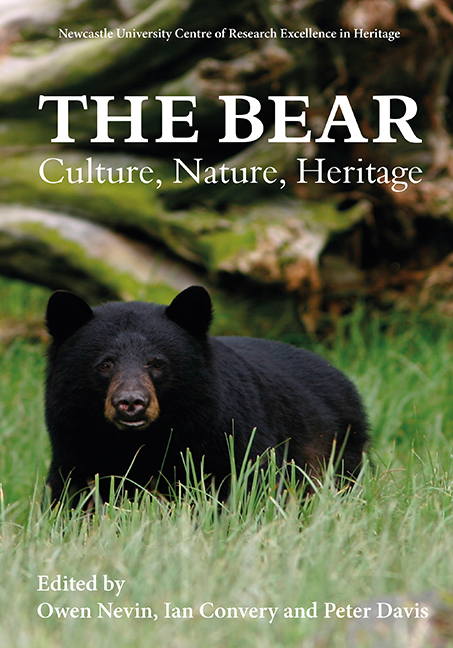Book contents
- Frontmatter
- Contents
- List of Illustrations
- Acknowledgments
- List of Abbreviations
- Foreword: The Bear: A Cultural and Natural Heritage
- Introduction: What is a Bear?
- Bear-People Interactions
- Bears in the Public Gaze
- Bear Biology, Management and Conservation
- Afterword: “It's Me Bear”: Reflections on a Unique Career Working with Bears
- List of Contributors
- Index
- Previous titles
3 - Bears within the Human Landscape: Cultural and Demographic Factors Influencing the Use of Bear Parts in Cambodia and Laos
Published online by Cambridge University Press: 21 March 2020
- Frontmatter
- Contents
- List of Illustrations
- Acknowledgments
- List of Abbreviations
- Foreword: The Bear: A Cultural and Natural Heritage
- Introduction: What is a Bear?
- Bear-People Interactions
- Bears in the Public Gaze
- Bear Biology, Management and Conservation
- Afterword: “It's Me Bear”: Reflections on a Unique Career Working with Bears
- List of Contributors
- Index
- Previous titles
Summary
Two species of bear are endemic to East and Southeast Asia, the Asiatic black bear or ‘moon’ bear (Ursus thibetanus), and the sun bear (Helarctos malayanus). The moon bear primarily occurs at more northerly latitudes, while the sun bear occurs at more southerly latitudes, although there is overlap in their ranges throughout Southeast Asia (Garshelis and Steinmetz 2016; Scotson et al 2017). Historically, the parts of both species have been used and traded as medical and non-medical commodities in East and Southeast Asia. As commodities and thus objects of consumption, bear parts assist individuals in ‘symbolic actions’ (Gell 1986). As an example of one identified symbolic consumption chain, elder Vietnamese males use bear bile as a means of communicating ‘respect and identity’ and as a means of maintaining good health (Drury 2009a).
Knowledge of the historic bear part trade and consumption throughout East Asia is dominated by information about their use by the Chinese. Bear parts have been used in China for thousands of years (Mills and Servheen 1994), and it is estimated that the first written use of bear gallbladder was around 600 CE (Common Era), when it was prescribed for ailments such as liver disease and haemorrhoids (Dutton et al 2011; Mills and Servheen 1994). Other parts of the bear were prescribed medically in China as well, with the bone, blood and fat all stated to be effective in curing various diseases. Use is still common throughout China, particularly because bears are farmed for their bile, and thus bile products are relatively accessible (Dutton et al 2011).
Bear populations in Asia were noted to be declining nearly three decades ago (Mills and Servheen 1991). Despite subsequent efforts to understand the extent to which these populations were declining, little has been found other than overwhelming evidence that, along with deforestation of bear habitat, the bear part trade is precipitating this decline (Crudge et al 2018a). Even though understanding the illegal trade in wildlife parts necessitates understanding of the human actors involved (Wallen and Daut 2018), sociological research has only recently begun to emerge. Additionally, this research has to date been largely focused on the Vietnamese and Chinese markets.
- Type
- Chapter
- Information
- The Bear: Culture, Nature, Heritage , pp. 33 - 44Publisher: Boydell & BrewerPrint publication year: 2019

